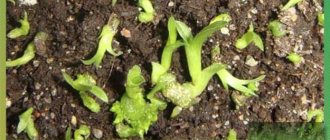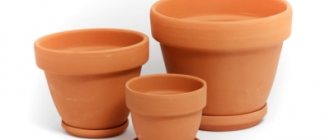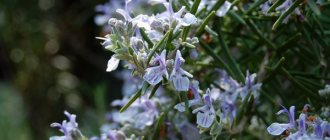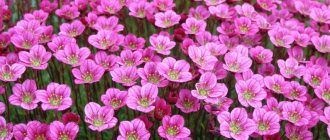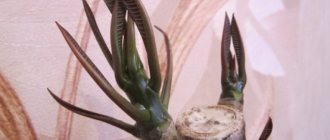What is culture
The orchid is gaining more and more fans every day, and there is no point in explaining what orchids look like. Despite the difficulties of growing a flower, many people purchase sprouts and seedlings. But not everyone can afford to buy an adult plant.
The history of the appearance of this flower is ancient. The very first mentions of orchids were found approximately 130 million years ago. Previously, this plant was classified as a medicinal crop.
Growing an orchid at home has become possible thanks to the effective work of botanists. They have developed varieties that can grow and reproduce at home. The orchid is a very capricious home crop; you can get abundant, beautiful blooms by fully observing all the requirements and conditions for growing.
An orchid is an indoor crop that reproduces by seeds, shoots, and bulbs. The most difficult method is growing from seeds.
Main difficulties
The main difficulty in growing orchids from seeds at home is maintaining sterility at all stages of sowing and growing plants. This is difficult to achieve without special training, so you need to be well prepared for the job.
If we grow orchid seeds at home, difficulties may arise from:
- with the purchase of low-quality seed material. Such seeds have poor germination and no expiration date is indicated;
- seed material, while still in the package, may be infected with foreign microflora ;
- violation of the technology of planting seeds in the ground , as a result of which colonies of foreign microflora are formed on the surface of the substrate. Such plants are discarded.
Features of care
Orchid care procedures bring a lot of trouble to a novice gardener. But professionals say that it is easy to get beautiful flowering at home if you follow all the conditions and rules.
It is very important to provide proper lighting, which is of great importance for the flower. It is necessary to provide bright light, but it must be diffused.
On a note! The flower will not die under direct rays. But the bright light will cause the leaves to lighten and stretch, but the flowers may not appear. Thin tulle or lutrasil is enough to diffuse the rays.
Temperature changes are beneficial for orchids to bloom abundantly. Temperatures can range from 18 to 27 degrees.
During the active growth period, abundant watering is important, and in winter the moisture supply should be reduced. Drought is not as bad for an orchid as excess water. It is best to water according to the shower principle, or pour it into a plate and place the pot in it for 15 minutes.
During the dormant period (from autumn to spring), the flower can not be shaded, since there will be few rays. There will be enough of them for new shoots to form and buds to form. During this period, the temperature is reduced to 13-18 degrees.
Sterilization
Using a glass funnel, pour the resulting substance into a special container for sowing (prepared flasks). All you need to do is pour a layer into each vessel to a height of no more than 1.5-2 cm. After the flask, you need to tightly close it with stoppers, and cover the stoppers themselves tightly with a layer of foil. If you used jars rather than flasks, they also need to be carefully and tightly closed. Be careful: do not tilt the flasks until the solution has completely hardened, otherwise the protofeed will cover the walls of the test tube or jar, and this can lead to the development of microorganisms.
To sterilize the substance, you will need a regular pressure cooker. Place a regular mesh on the bottom, which is used for steaming products. Add water, but be careful that it does not reach just a little to the mesh. Carefully place the containers with the solution on the grid. Place the pressure cooker on the stove. As soon as an acceptable pressure is established in the apparatus, we set aside 10-15 minutes for the medium to undergo processing. After this time, let the pressure cooker cool down a bit. After this, we take out the vessels and carefully place them on a flat surface, without tilting or turning them over until the solution has completely hardened. Vessels with the finished substance can be stored for quite a long time, up to several months (preferably in the refrigerator).
There is another method of sterilization, in which the entire nutrient medium is processed in one container. Tindalization (differential boiling) method. A standard saucepan will do. Bring the water to a boil, place a tightly closed flask with the prepared solution in it. Boil for 20 minutes. Remove and leave the vessel to cool, repeat the procedure in a day. Repeated boiling is necessary to destroy microorganisms that were not killed during the first treatment. The substance sterilized in this way is also stored for quite a long time. The advantage of this method is that there is no need to use additional dishes. Disadvantage: all proto-feed must be melted before each sowing, and this may negatively affect its properties.
Orchid seeds, what are they?
Orchid (phalaenopsis) seeds ripen in a box with 3 or 6 leaves. There are up to 4 million of them, the length of one reaches from 0.3 to 3.3 mm. You can only use mature seed after the boll has dried. Orchid seeds look like dust or sand due to the large number and small quantity. The dust from the seeds is not black, but yellowish-cream in color.
Collecting seeds is very difficult. But nature compensated for the size of the achenes with a large number of them in the box. Under natural conditions, orchids reproduce by seeds. The wind carries the seed dust, the seeds fall on the bark and leaves of the trees and germinate.
It takes about 2.5-3 months for the seed to fully ripen.
Method of preparing nutrient medium
A nutrient medium for germinating orchid seeds was proposed by US professor L. Knudson. She is getting ready :
- Based on agar-agar (extracts from brown algae);
- And distilled water with added trace elements.
Agar-agar is poured into water (according to the recipe) and boiled in a water bath until dissolved. Gradually, sucrose and fructose are introduced there , as well as the necessary components of the medium.
ATTENTION! When preparing Knudson's medium and placing seeds in it, maintaining sterility is strictly necessary!
Check the reaction of the medium (ideally about 5) with litmus paper, if necessary, add a little dilute acid (nitric, hydrochloric) and boil again. After cooling, a jelly-like mass is obtained.
Collecting seeds
Collecting seeds is difficult, but doable. As the box grows, a napkin is tied to it in the form of a pocket so that dust does not fly away when the walls begin to crack. A mature capsule turns brown (in rare cases it remains green).
When the boll is dry, cut it off and transfer the seed dust onto a piece of paper. Planting such small seeds is very difficult. This is another reason why seed propagation often fails.
Composition of substrate for orchid seeds
The main component contained in any ready-made mixture intended for growing phalaenopsis and other orchids from seeds is agar-agar powder . It has a yellowish tint and consists of dried red and brown algae. Preparation:
- water is heated to 100 °C;
- then add and dissolve agar-agar powder.
When the substance cools completely, it will turn into a jelly-like consistency. It will contain polysaccharides, 4% minerals. The substrate for some types of orchids is supplemented with other components.
This is what orchid seeds look like
Breeding orchids by seeds
Orchid seeds are not able to germinate under normal conditions, like other plants. Since they do not provide special nutrient reservoirs (endosperm) that nourish the embryo in the first stages of growth.
On a note!
Germination requires a special nutrient medium for orchid seeds. Under natural conditions, the culture grows in symbiosis with fungi.
What you need
To grow orchids from seeds, you will need to ensure you have:
- glass containers with a volume of 300-400 ml (flasks or jars with lids) where the seeds are sown;
- a small glass jar for the sterilization procedure;
- rubber or cotton wool plugs;
- disposable syringes;
- litmus strips;
- 2% hydrogen peroxide solution.
The lids are also prepared before use. They are placed in a thin glass tube, the top hole of which is closed with a cotton ball. A second similar hole is also made and covered with an adhesive plaster (seeding is performed through it).
Preparing tools
All materials, instruments and containers are sterilized before use. This will help protect young shoots from damage by pathogenic bacteria.
If at the very beginning of the experiment you violate the basic rules of sterility, then you may not continue the experiment. The seeds will no longer be viable.
Soil preparation
To germinate orchid seeds, you can use a ready-made nutrient medium or make it yourself. You can grow an orchid at home from seeds with large flowers only in a special composition. It will not be possible to sow seeds in ordinary soil; they will die immediately.
Ready mix options
To grow an orchid from seeds at home, you can buy Knudson’s ready-made nutrient medium. It is dissolved according to the instructions. Orchids from seeds should be grown in this composition due to their special composition:
- agar-agar (a polysaccharide that helps the composition achieve jelly density);
- sugar;
- the salts included in the composition are in a balanced amount.
After preparation, use a litmus strip to check the acidity of the resulting medium.
On a note!
It is necessary to check acidity only at room temperature, since in warm compositions the acidity is lower.
After preparation, the nutrient mixture is heated and poured into jars (no more than 60 ml of the jelly-like composition is placed in 200 ml).
Making your own mixture
You can make a nutrient medium for germinating orchid seeds on your own, following simple step-by-step instructions.
- 10 g of fructose glucose and 8 g of agar-agar are added to half a liter of boiling distilled water.
- Mix the options over low heat until the agar-agar dissolves.
- In the second container, another 0.5 liters of water are heated and 1.5 g of fertilizer (nitrogen, phosphorus, potassium), 5 drops of phytostimulant for root formation, 1 g. activated carbon.
- After all components have dissolved, both solutions are combined and stirred.
- If necessary, you need to reduce the acidity to 4.8-5.2 pH. The indicator is reduced by introducing a solution of potash, and increased by orthophosphorus liquid.
- 30 ml of prepared liquid is poured into each sterilized seed container.
- The flasks with the special medium are closed and sterilized for about half an hour.
- The nutrient medium and containers are left for 4-5 days. If mold forms, you will have to re-prepare the growing composition.
You can use folk recipes to make a nutrient medium.
- 450 ml potato juice, 40 g powdered sugar, 7 g special fertilizer, 20 g agar-agar, 1 tsp. lemon juice.
- 200 g of starch (from potatoes), 500 ml of coconut water, 20 agar-agar, 1-2 ml of orchid fertilizer, freshly squeezed puree from 0.5 kg of tomato.
- 460 ml distilled water, 1 tab. activated carbon, 5 g sugar, 40 ml pineapple juice, 5 g honey, 100 g starch, 2-3 special fertilizers.
To prepare a properly favorable substrate, you need to be very careful; compliance with sterility requirements is the main and important condition.
Seed treatment and direct sowing
Before planting orchid seeds, you need to sterilize them. First, the seed box is wiped with a cotton swab dipped in alcohol. Then the seed dust is poured into a small glass jar and closed with a lid. Using a syringe, a little 2% hydrogen peroxide solution is injected into the container with the seeds.
The seeds are in the container for about 5-10 minutes. The liquid containing the seeds is removed using another syringe. Pour through a hole sealed with an adhesive plaster into a jar. The liquid is carefully distributed over the surface of the nutrient medium.
On a note!
All sowing procedures are performed directly over a saucepan where water is boiling.
If you do not adhere to sterile conditions when germinating seeds, colonies of microorganisms will form on top within a week. These containers are subject to rejection.
Conditions of detention
After transferring the seeds to the nutrient medium, the jars are provided with the necessary conditions. It is important to monitor the temperature and lighting.
The sown seeds will require a temperature in the range of 20-23 degrees to germinate. 12 hours of lighting is important. At the same time, they provide diffused light.
Features of caring for sprouts
The duration of emergence of seedlings varies for different varieties. The first shoots can appear in 4-6 weeks, and sometimes wait up to 6-9 months. First, a small ball with threads of shoots is formed. They cling to the surface and consume the necessary components for further development. The first leaves will appear next, and only then the real roots will begin to form.
As long as the crops are kept under sterile conditions, no special care is required. It is important not to open the jars while they are in glass containers, violating the sterility.
How orchids grow
Orchids or Orchids (Orchidaceae) are a family of herbaceous perennials. They can be found everywhere, from the tropics to the forest-tundra, but, of course, the brightest varieties, captivating with their exotic coloring and the shape of large flowers, live in tropical forests. It is impossible to calculate the exact number of representatives of the family - at the moment, about 35,000 different orchids are known, including natural hybrids (plants have the ability to cross, including interspecific ones) and varieties bred through selective breeding. The eight hundred genera included in the family make up approximately 10% of all plants in the world.
Humanity has been familiar with orchids for a long time. They were first “domesticated” by the Chinese around 2000 BC. e. The name comes from the Greek orchis (“testicle”). The plant owes them the characteristic shape of thickened stems. The Greeks own beautiful legends about the appearance of orchids on Earth. According to one of them, these are fragments of a rainbow that fell from the sky. According to another version, the first orchid grew where Aphrodite dropped her shoe.
Blooming orchids amaze with a variety of shades
Orchids vary greatly in appearance. It is difficult to suspect “relatives” in many of them, even distant ones. But most of them lead an epiphytic or semi-epiphytic lifestyle, living in trees. They use the “host” only as a support, without parasitizing on him.
Most orchids in nature live on trees, but there are also those that grow on rocks (the so-called lithophytes)
Orchids obtain the necessary moisture and nutrients from the atmosphere, absorbing them using a developed system of aerial roots covered with a thick layer of special tissue - velamen.
Orchid roots sticking out of the pot are normal; they participate in the process of photosynthesis and help absorb moisture from the air.
Based on their growth characteristics, they are divided into two groups:
- Monopodial orchids. The growth point is the apical bud of the shoot. It persists throughout the life of the plant, disappearing only when it ages or dies. Such varieties stretch upward, peduncles and side shoots are formed from buds “hiding” in the axils of the leaves. Most often, adult plants resemble vines or their leaves gradually gather into a rosette.
- Sympodial orchids. As soon as the youngest shoot is recognized by the plant as sufficiently developed, having reached a certain size, the growth point at its top dies. At its base, the rhizome forms a new one, from which another shoot or peduncle appears. These orchids only grow in one direction.
Monopodial orchids grow predominantly upward, sympodial orchids - to the side
Orchid flowers vary greatly in size (from a few centimeters to almost a meter in diameter) and color (the expression “all the colors of the rainbow” does not even come close to describing this variety of shades and tones), but their structure is approximately the same. The upper part consists of three sepals, which often grow together to form one “petal”. The lower one consists of two true petals of a smaller size, between which there is a third one - the so-called lip, which sharply contrasts in color with the overall color of the flower. It contains a nectary. In shape it resembles a bag, a shoe or an elongated gramophone horn. Often the flowers are collected in inflorescences (each with an average of 4–16 buds).
When and how to replant sprouts
It takes up to a year from sowing the seeds to the moment they are transferred to the substrate. The following composition is prepared for transplantation:
- 1 part each of crushed coniferous bark, sphagnum moss, fern rhizomes;
- 10 tab. activated carbon (pre-crushed).
A layer of classic drainage is placed at the bottom of the plastic cups, then the prepared soil is placed. The seedlings are removed from the original container in a circular motion, and the roots are washed. Carefully transfer the sprouts into cups with substrate. At first, small orchids are not watered, but simply sprayed, making sure that the soil remains moist.
The orchid is left untouched for six months, and then it is replanted in the usual traditional soil for orchids.
Why a simple substrate is not suitable
The process of cell division, supported by carbohydrates, is completely absent in the starch grains of a mature orchid embryo. The grain cells contain only fat-like compounds and proteins, so orchid seeds cannot germinate. In this they are helped by mycorrhiza-forming fungi, which, when ingested by the seed, form a mutually beneficial symbiosis.
Note! Since an adult orchid grows on a mycelium, most of the seeds that fall near it will germinate. Seeds that have been blown away by the wind will survive if they fall into the mushroom habitat.
Caring for young orchid sprouts
After transplantation, young orchids are closely monitored, providing the necessary care. Watering is carried out by spraying the useful substrate.
On a note!
Overmoistening should not be allowed, as the small roots are very thin and vulnerable. They can instantly rot, which will lead to the death of the young plant.
In six months, the sprouts will become stronger, they will begin to be transplanted into classic soil for adult specimens and will begin to be cared for in the traditional way. Flowers will appear after transplantation in 4-5 years.
Features of the structure of orchid flowers and their pollination
To obtain orchid seeds, you must pollinate the flower yourself. And for this you need to understand its structure well.
Orchids appeared on our planet later than many other flowering plants, so they had to develop their own competitive mechanisms to attract pollinators:
- long life expectancy of each individual flower;
- alternate dissolution of flowers in an inflorescence;
- long flower arrows carrying inflorescences from the shadow of tree crowns;
- a special shape of one of the petals (lips), adapted as a “landing platform” for insects;
- sticky pollinaria - compact lumps of pollen grains connected in the form of a waxy mass.
It is the pollinaria (otherwise known as pollinia or anthers) that will need to be extracted from the flower in order to pollinate the orchid artificially. It’s easier to find these formations if you know what parts an orchid flower is divided into:
| Part of a flower | Description |
| Sepalia | Three sepals located along the outer contour of the flower. |
| Petalia | Two petals located along the internal contour along the horizontal axis, opposite each other. |
| Lip (labellum) | Three fused modified petals located in the center of the flower in the form of a platform, cup, jug, etc. |
| Column | The reproductive organ is located in the very center of the flower in the form of a small “column”. |
The pollinaria of an orchid are located inside the column. It is this organ that will need to be worked with when carrying out artificial pollination.
Important! Despite the fact that all other parts of the flower serve only to attract insects and are not of great importance for the artificial pollination process itself, they must be handled carefully. Flowers with severe mechanical damage are less likely to pollinate.
The column is a miniature organ, so you need to work with it with a confident hand and with pinpoint precision. All instruments must be thin and sterile.
Problems you may encounter
You can encounter difficulties when growing phalaenopsis from seeds at home at any stage of this procedure.
There are many reasons for poor germination:
- poor quality seed material:
- non-compliance with humidity and lighting conditions;
- flaws in creating sterility and so on.
As a result of any mistake, seeds or seedlings can be destroyed, or a plant can grow but not bloom.
Seed material
This is the first problem you may encounter. When collecting it yourself, it is difficult to guess when the seed box is at full maturity.
Buying ready-made germinating seed material is even more difficult. They purchase it by ordering on Chinese websites. But when the parcels arrive, apart from the bag of seeds, there are no instructions, collection date, variety name, and so on. There is a high probability that instead of the treasured orchid, you received the seeds of a simple lawn.
On a note!
Planting an orchid with seeds from China is like playing the lottery: you don’t know the end result. It all depends on the seller’s honesty and integrity.
Maintaining sterility
Its violation can be judged by the appearance of mold in containers. You can save germinating seeds by trying to change the substrate.
- A new jelly is prepared from the nutrient medium.
- Fill the flask with warm water and shake it slightly.
- What is contained is poured into a small container. Any 1% fungicide solution (1-2 drops) is added to the mass.
- After 15 minutes, the sprouts are placed in the prepared substrate.
Next, the container is closed again, ensuring sterility for the sprouts.
You may be interested in:
Orchid in hydrogel: planting, growing and care Orchid is a decorative flower that appeared on windowsills not so long ago. Among the various species, the most…Read more…
Where to buy and what is the price?
It is possible to purchase high-quality seed material only from private collectors or through nurseries. A responsible seller can be found through thematic groups on social networks or on flower growers forums.
On the Chinese Internet site AliExpress you can also find advertisements for the sale of orchid seeds. In order not to run into a fake, you should use the services of only trusted stores on the Chinese website , carefully study the reviews and photographs of the seed.
Orchid seeds from Chinese representatives are also often found on the online trading platforms Amazon and Ebay.
The price of seeds has a varied range. The cost of seed from Chinese breeders starts from 180 rubles. Seeds of rare hybrids can cost up to several thousand rubles.
